Short-Term Wind Power Prediction Based on CEEMDAN-SE and Bidirectional LSTM Neural Network with Markov Chain
Abstract
1. Introduction
- A hybrid prediction model that incorporates CEEMDAN, SE, BiLSTM, and MC is proposed. In comparison to EMD, CEEMDAN is capable of resolving the issues of modal mixing and incomplete decomposition, as well as enhancing the efficacy of decomposition.
- The decomposed subsequences are reconstructed by using SE to combine components with close entropy values into one reconstructed component to eliminate redundant features of wind power data, improve prediction accuracy and shorten prediction time.
- An improved LSTM neural network model, BiLSTM neural network, is utilized. BiLSTM is a network with two LSTMs in reverse parallel, which can transmit both forward and reverse information to better mine the wind power data information.
- MC is used to correct the data after the neural network prediction, and the k-step transfer matrix is used to characterize the data deviation, bringing the corrected data closer to the actual value.
- The model of this paper was compared to other prediction models, validated on the data set, and evaluated by four indicators to demonstrate its superiority over other models.
2. Wind Power Data Pre-Processing
2.1. Wind Power Data Source
2.2. Wind Speed-Wind Power Curve
2.3. Wind Power Data Outlier Handling
2.4. Normalization of Wind Power Data
2.5. CEEMDAN-Based Wind Power Data Decomposition
- Adding white noise with a mean value of 0 to the original signal , the data signal of the i-th experiment iswhere is the weight coefficient of white noise; is the number of trials.
- The signal is decomposed by EMD, and the first modal component and the first residual component are obtained after decomposition as .
- Assuming that is the modal operator, the second modal component is obtained by adding white noise to the residual component and then performing EMD decomposition.where is the white noise weight coefficient, is the white noise produced during the ith processing, is the first modal component, and is the modal operator. represents the total amount of decomposition sequences. The second residual component remaining is denoted as .
- Using the above method yields the kth modal component and the kth residual component .
- Using the above steps until the CEEMDAN stopping condition is met, the final data decomposition iswhere is the residual component.
2.6. Reconstruction of Wind Power Sequences Based on Sample Entropy
3. Wind Power Prediction Model Based on BiLSTM Neural Network
3.1. Gray Relation Analysis
3.2. LSTM Neural Network
3.3. BiLSTM Neural Network
3.4. Wind Power Data Residual Correction Based on MC
- Calculation of wind power error series:where a represents the actual historical wind power data of sample point n; represents the predicted value of sample point n derived from the prediction model; and N represents the number of sample points.
- The sample means and standard deviation of the error series are computed, and the wind power error series is subdivided into five intervals using the mean-variance state division method by the MC:
- Compute the k-step state transfer matrix , where iswhere is the probability that state transfers to the state after s steps, is the number of times state transfers to state after s steps, and is the total number of times state occurs. Then the s-step state transfer probability matrix can be expressed as
- Since the wind power error sequence is divided into five intervals, the state where the first five values of the wind power error sequence are located is taken as the initial state, and take the row vector corresponding to each initial state in the transfer matrix , thus forming a new probability matrix as
- Take the state corresponding to , which is also the state to which the error sequence is most likely to be transferred, to be the state of that corrected error sequence. The corrected value of this error iswhere E1 and E2 are the upper and lower bounds of He for the residual state interval to be corrected.
- Correction of the predicted wind power series for the day to be forecast iswhere and are the predicted wind power values before and after correction, respectively.
3.5. The Model’s Evaluation Standards
4. CEEMDAN-SE-BiLSTM-MC Prediction Model Building
- Using the CEEMDAN algorithm, the raw wind power data are decomposed to derive several modal components and residual components. The sample entropy values of each component are calculated, and the components with similar entropy values are combined and reconstructed to form a new power component sequence.
- The correlation value of each wind power reconstruction power component is calculated according to the gray correlation algorithm, and the influence value with a gray relation greater than 0.9 is selected as input.
- Each component is divided into a training set and a test set, and the reconstructed wind power components are predicted separately using the BiLSTM network, and the overall wind power prediction is obtained by summing up all the predicted values.
- The prediction error between the historical wind power and the predicted power is calculated, and the preliminary prediction results are corrected using Markov chains to obtain the final predicted wind power.
- The wind power prediction results are contrasted with the actual measured values, and then the prediction errors are analyzed.
5. Example Simulation Analysis
5.1. Experimental Data
5.2. Results of GRA
5.3. Data Pre-Processing Results
5.4. Analysis of Prediction Results
- In June, when comparing the evaluation metrics of BiLSTM and CEEMDAN-BiLSTM, the RMSE, MAE, and MAPE of CEEMDAN-BiLSTM decreased by 3.5%, 32.2%, and 20.5%, respectively, while the increased by 0.7%. In the remaining three months, the forecasting metrics improved due to the ability of the decomposition algorithm to decompose the raw data into multiple regular and smoother data, making it simpler for the model to capture more valuable information and produce more accurate forecasting results.
- For the prediction model with sample entropy added, the RMSE, MAE, and MAPE of the model with sample entropy added are smaller than those of the model without sample entropy added, and the is greater than that of the model without sample entropy added, compared with the prediction model without sample entropy added. Observably, the sample entropy reduces the error of the BiLSTM model’s prediction results and improves its prediction performance.
- Taking the March data as an example, the RMSE, MAE, MAPE, and RAR of the BiLSTM model are smaller than those of the LSTM model, and the is improved by 3.6%, so the BiLSTM model has higher prediction accuracy in the experiment compared with the LSTM model, and the unique network architecture of the BiLSTM model has some advantages in the temporal prediction.
- In addition, comparing the CEEMDAN-SE-BiLSTM-MC model with the CEEMDAN-SE-BiLSTM model, it can be seen that all four evaluation metrics of the MC error correction method outperform the model without using the error correction method. This illustrates the superiority of this error correction algorithm, which can further improve the prediction accuracy of the model while retaining the good robustness of the CEEMDAN-SE-BiLSTM model.
6. Conclusions
- The original wind power data were decomposed and reconstructed using CEEMDAN-SE. Compared with the unprocessed model, the model using CEEMDAN-SE had an 8% reduction in RMSE and a higher prediction accuracy in the middle of June, which indicates that CEEMDAN-SE can effectively process the wind power data and reduce the degree of redundancy of the data.
- An improved LSTM neural network model is used to MC correct the predicted data, which effectively reduces the error of the predicted data and improves the accuracy of the prediction.
- The CEEMDAN-SE-BiLSTM-MC model proposed in this paper is compared with other models, and the model is evaluated by four kinds of indexes using wind power data from four different months, which demonstrates the accuracy of this paper’s model in the prediction of wind power and has a better prediction effect compared with other prediction models.
Author Contributions
Funding
Data Availability Statement
Conflicts of Interest
Abbreviations
| CEEMDAN | Complementary ensemble empirical mode decomposition with adaptive noise |
| SE | Sample entropy |
| BiLSTM | Bidirectional long short-term memory network |
| MC | Markov chain |
| NWP | Numerical weather prediction |
| IMF | Intrinsic mode function |
| EMD | Empirical mode decomposition |
| GRA | Gray Relation Analysis |
| RMSE | Results root mean square error |
| MAE | Mean absolute error |
| MAPE | Mean absolute percentage error |
| RAR | Accuracy rate |
Appendix A
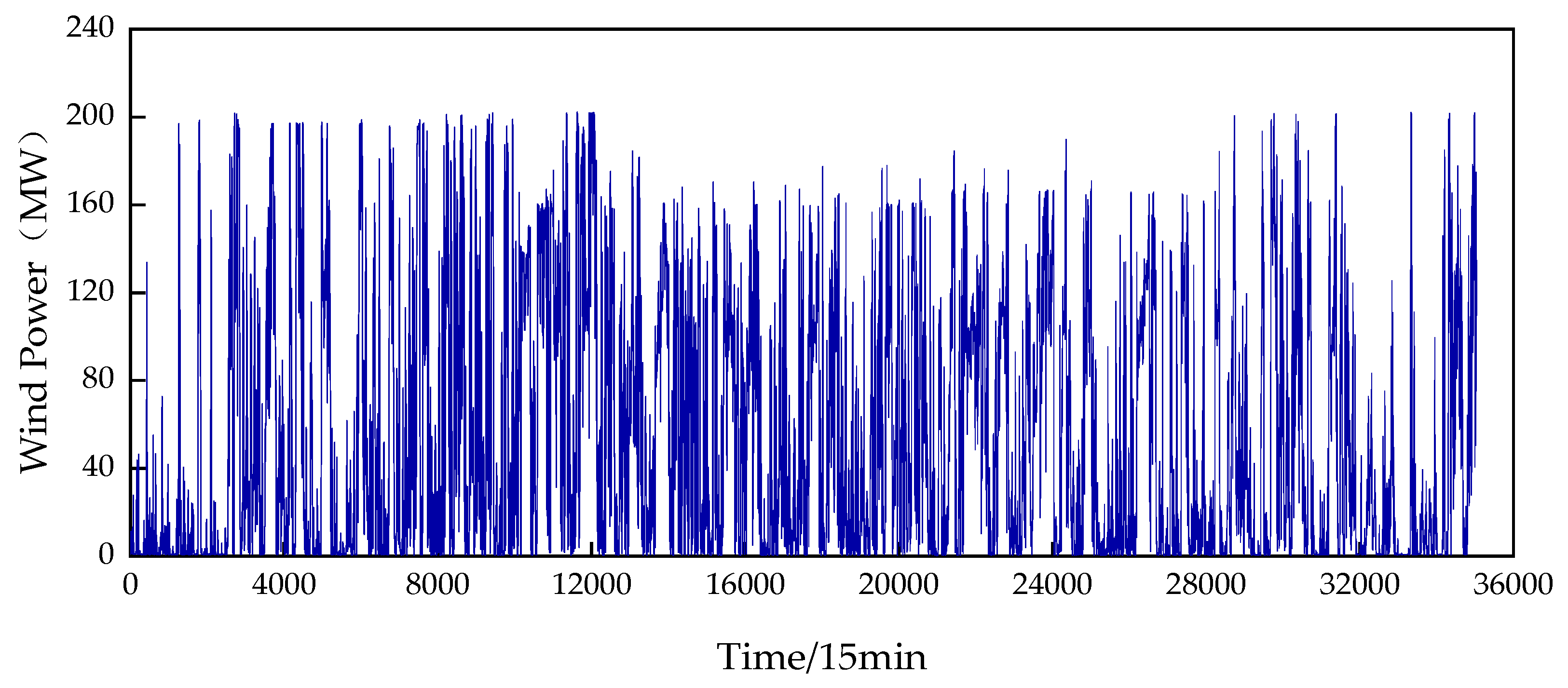
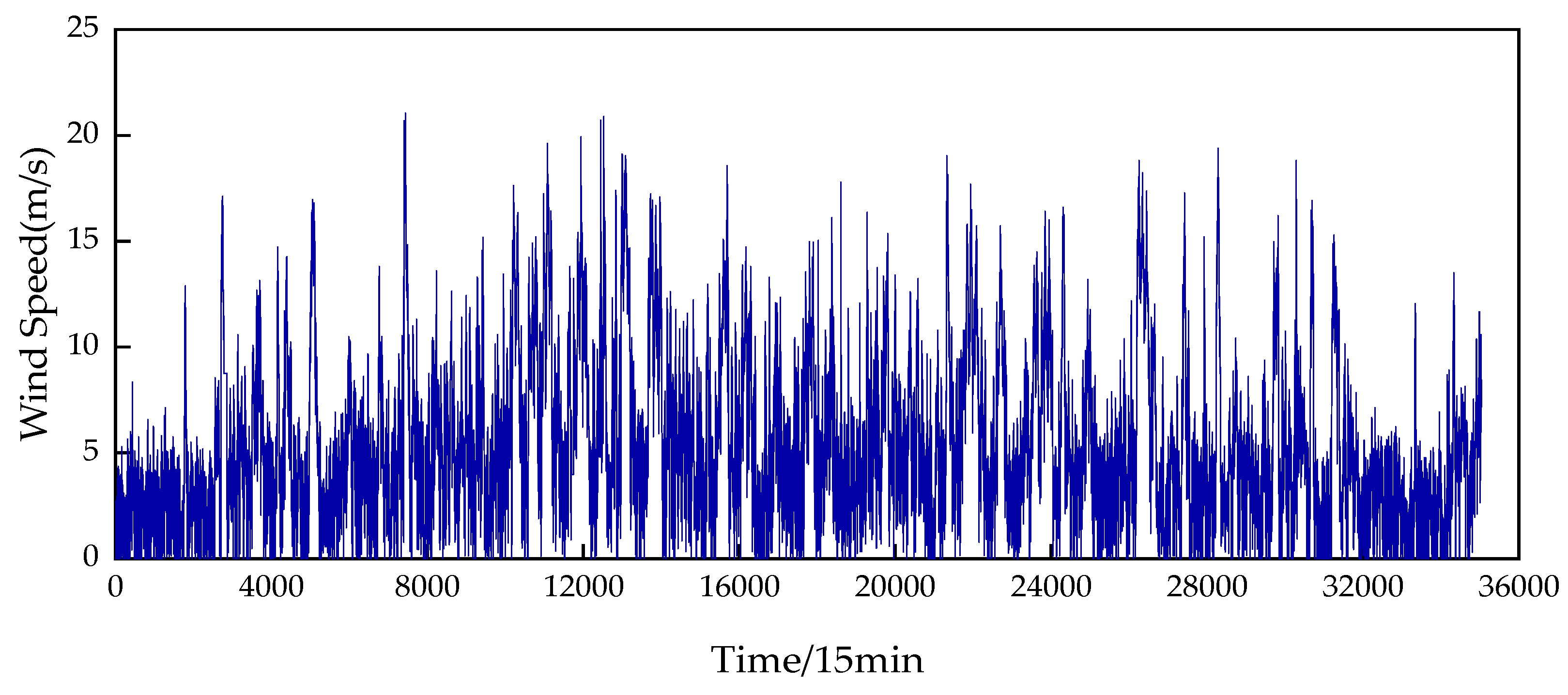
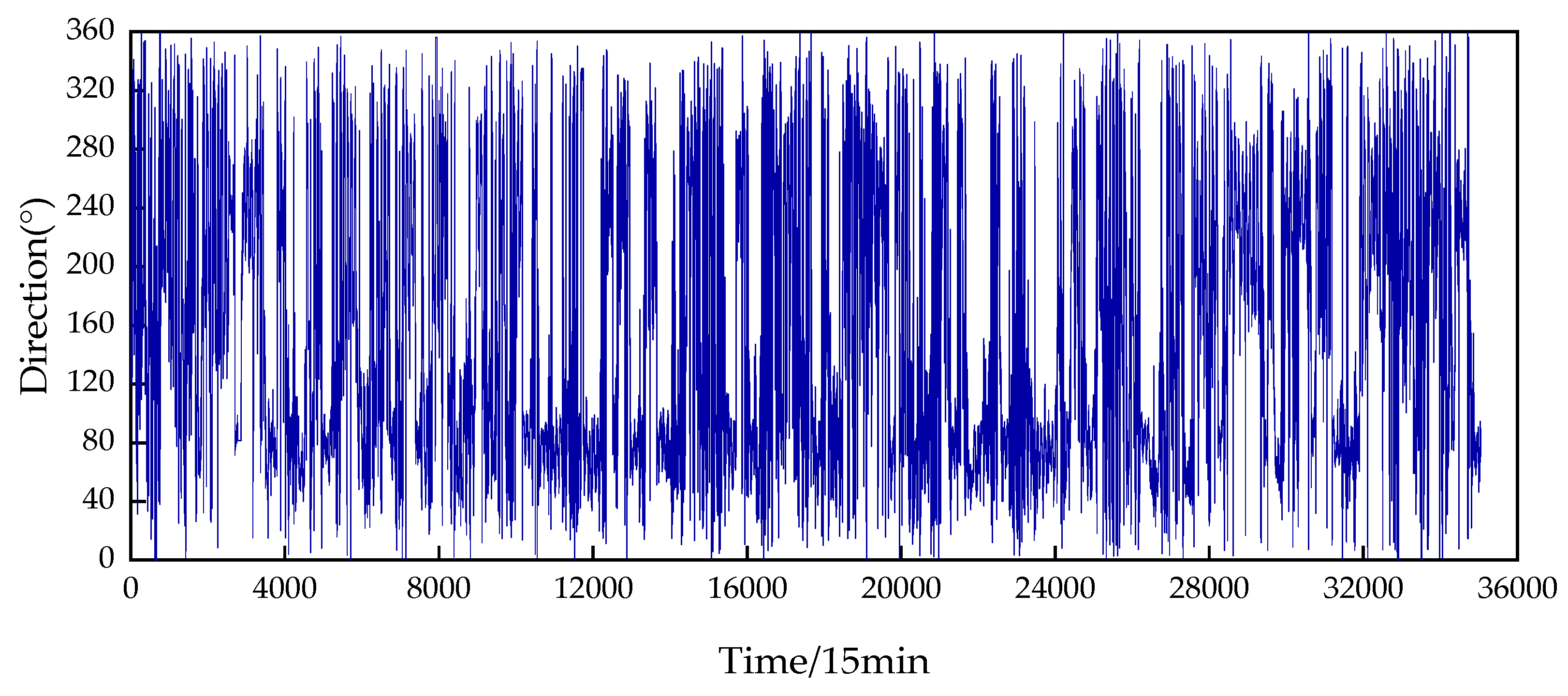
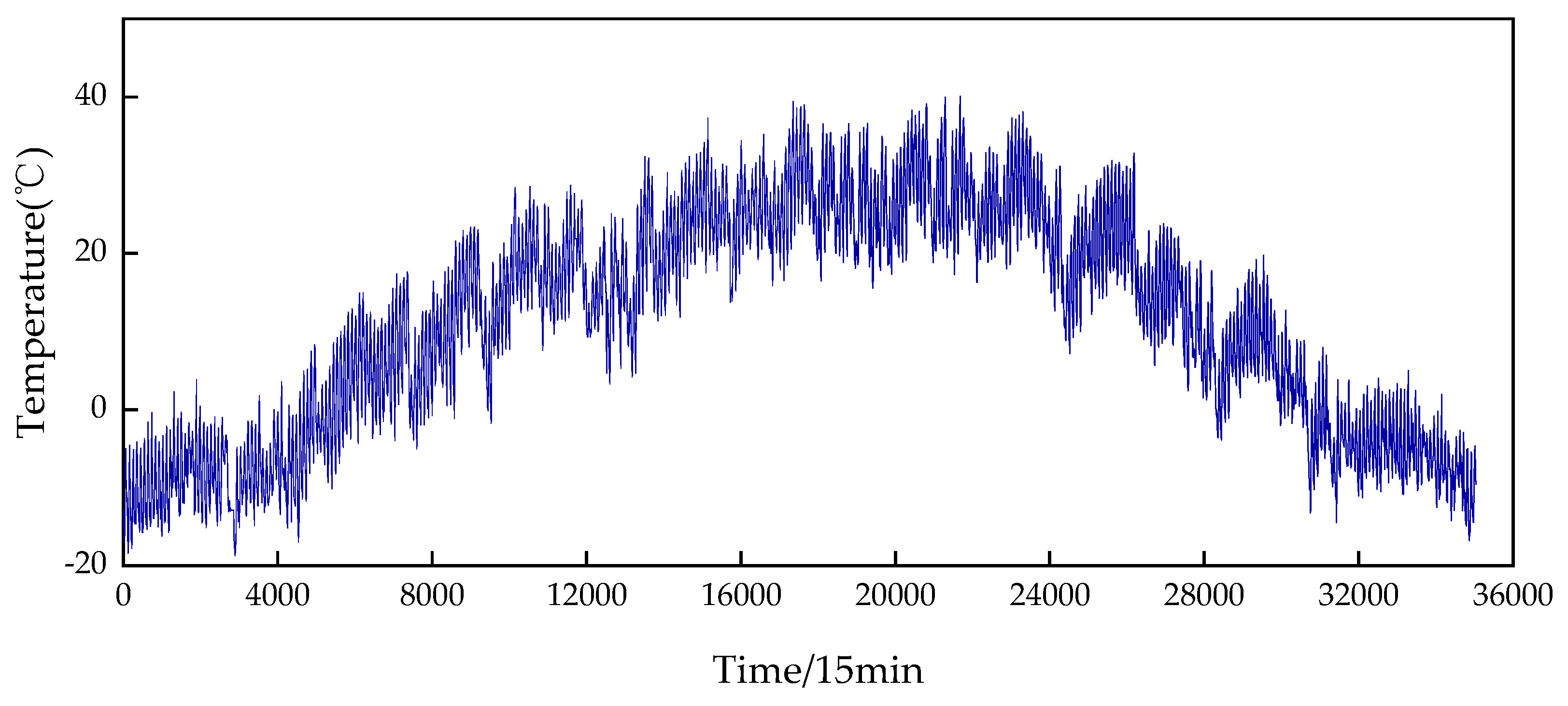
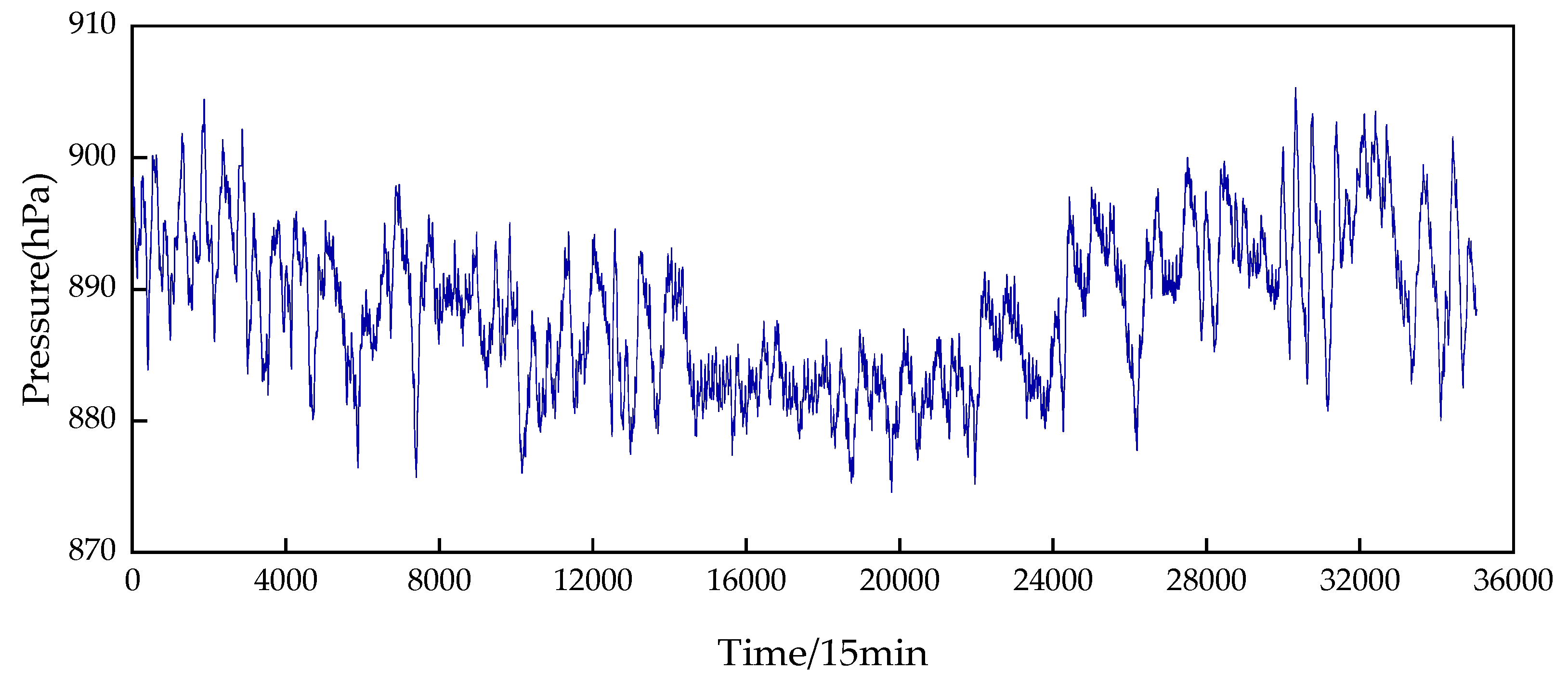
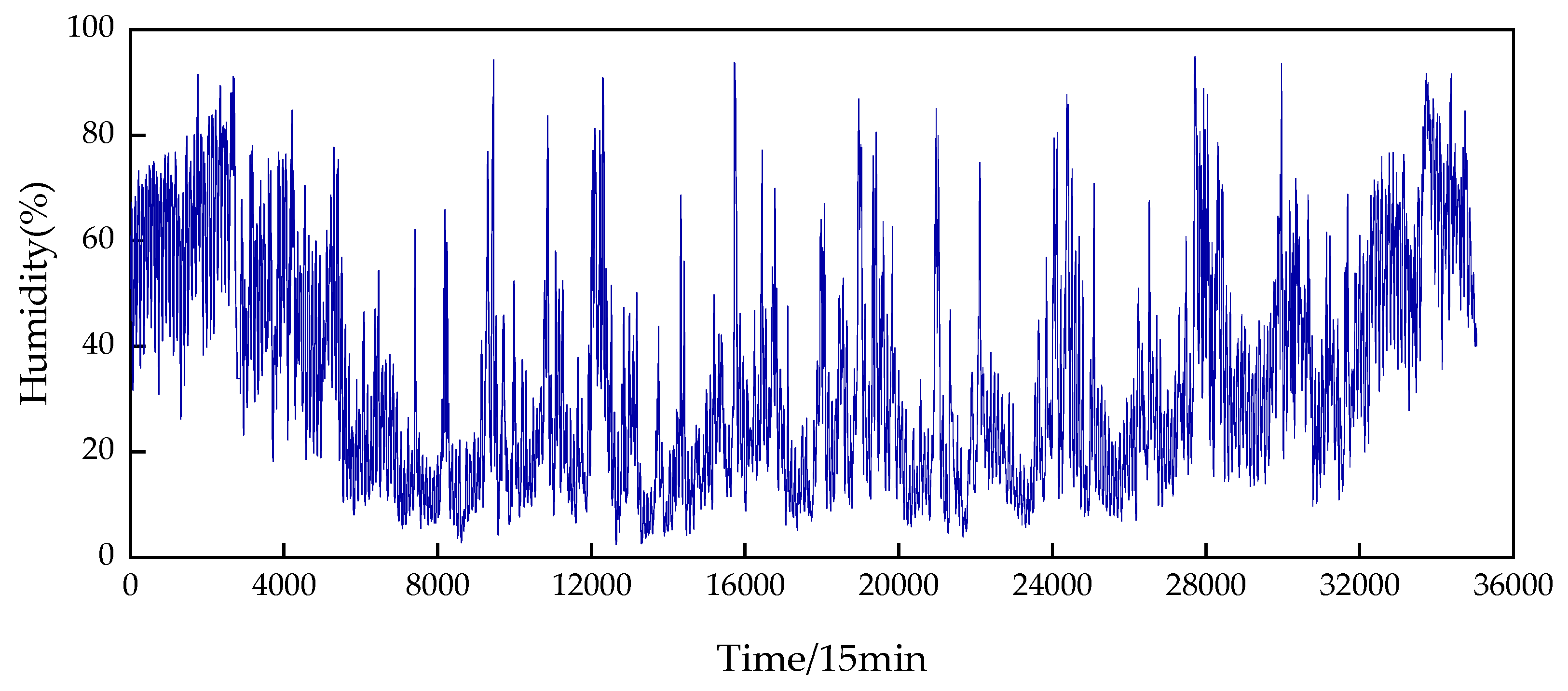
References
- Liu, L.; Liu, J.; Ye, Y.; Liu, H.; Chen, K.; Li, D.; Dong, X.; Sun, M. Ultra-short-term wind power forecasting based on deep Bayesian model with uncertainty. Renew. Energy 2023, 205, 598–607. [Google Scholar] [CrossRef]
- Cheng, K.; Peng, X.X.; Xu, Q.Y.; Wang, B.; Liu, C.; Che, J.F. Short-term Wind Power Prediction Based on Feature Selection and Multi-level Deep Transfer Learning. High Volt. 2022, 48, 497–503. [Google Scholar]
- GWEC. The Global Wind Report. 2022. Available online: https://gwec.net/global-wind-report-2022/ (accessed on 1 May 2023).
- Cui, Y.; Wang, Y.J.; Huang, Y.H.; Wang, Z.; Wang, M.C. Closed-loop Wind Power Ultra-short-term Forecasting Strategy Based on Multi-attention Framework and Guided Supervised Learning. Proc. CSEE 2023, 43, 1334–1346. [Google Scholar]
- Tammelin, B.; Vihma, T.; Atlaskin, E.; Badger, J.; Fortelius, C.; Gregow, H.; Horttanainen, M.; Hyvonen, R.; Kilpinen, J.; Latikka, J.; et al. Production of the Finnish Wind Atlas. Wind. Energy 2013, 16, 19–35. [Google Scholar] [CrossRef]
- Wang, K.J.; Qi, X.X.; Liu, H.D.; Song, J.K. Deep belief network based k-means cluster approach for short-term wind power forecasting. Energy 2018, 165, 840–852. [Google Scholar] [CrossRef]
- Couto, A.; Estanqueiro, A. Enhancing wind power forecast accuracy using the weather research and forecasting numerical model-based features and artificial neuronal networks. Renew. Energy 2022, 201, 1076–1085. [Google Scholar] [CrossRef]
- Karakus, O.; Kuruoglu, E.E.; Altinkaya, M.A. One-day ahead wind speed/power prediction based on polynomial autoregressive model. IET Renew. Power Gener. 2017, 11, 1430–1439. [Google Scholar] [CrossRef]
- Zhang, Y.G.; Zhao, Y.; Kong, C.H.; Chen, B. A new prediction method based on VMD-PRBF-ARMA-E model considering wind speed characteristic. Energy Convers. Manag. 2020, 203, 112254. [Google Scholar] [CrossRef]
- Aasim; Singh, S.N.; Mohapatra, A. Repeated wavelet transform based ARIMA model for very short-term wind speed forecasting. Renew. Energy 2019, 136, 758–768. [Google Scholar]
- Chen, H.; Zhang, J.Z.; Tao, Y.B.; Tan, F.L. Asymmetric GARCH type models for asymmetric volatility characteristics analysis and wind power forecasting. Prot. Control. Mod. Power Syst. 2019, 4, 29. [Google Scholar] [CrossRef]
- Yildiz, C.; Acikgoz, H.; Korkmaz, D.; Budak, U. An improved residual-based convolutional neural network for very short-term wind power forecasting. Energy Convers. Manag. 2021, 228, 113731. [Google Scholar] [CrossRef]
- Liu, D.; Niu, D.X.; Wang, H.; Fan, L.L. Short-term wind speed forecasting using wavelet transform and support vector machines optimized by genetic algorithm. Renew. Energy 2014, 62, 592–597. [Google Scholar] [CrossRef]
- Qing, X.Y.; Niu, Y.G. Hourly day-ahead solar irradiance prediction using weather forecasts by LSTM. Energy 2018, 148, 461–468. [Google Scholar] [CrossRef]
- Zhu, Q.M.; Li, H.Y.; Wang, Z.Q.; Chen, J.F.; Wang, B. Ultra-short-term prediction of wind farm power generation based on long- and short-term memory networks. Power Syst. Technol. 2017, 41, 3797–3802. [Google Scholar]
- Li, Y.; Tang, F.; Gao, X.; Zhang, T.Y.; Qi, J.F.; Xie, J.R.; Li, X.N.; Guo, Y.H. Numerical Weather Prediction Correction Strategy for Short-Term Wind Power Forecasting Based on Bidirectional Gated Recurrent Unit and XGBoost. Front. Energy Res. 2022, 9, 836144. [Google Scholar] [CrossRef]
- Liu, Z.F.; Li, X.Y.; Zhao, H.Y. Short-Term Wind Power Forecasting Based on Feature Analysis and Error Correction. Energies 2023, 16, 4249. [Google Scholar] [CrossRef]
- Liu, H.; Duan, Z.; Chen, C.; Wu, H.P. A novel two-stage deep learning wind speed forecasting method with adaptive multiple error corrections and bivariate Dirichlet process mixture model. Energy Convers. Manag. 2019, 199, 111975. [Google Scholar] [CrossRef]
- Yang, Q.L.; Deng, C.H.; Chang, X.Q. Ultra-short-term/short-term wind speed prediction based on improved singular spectrum analysis. Renew. Energy 2022, 184, 36–44. [Google Scholar]
- Qin, G.Y.; Yan, Q.Y.; Zhu, J.Y.; Xu, C.B.; Kammen, D.M. Day-Ahead Wind Power Forecasting Based on Wind Load Data Using Hybrid Optimization Algorithm. Sustainability 2021, 13, 1164. [Google Scholar] [CrossRef]
- Huang, C.M.; Chen, S.J.; Yang, S.P.; Chen, H.J. One-Day-Ahead Hourly Wind Power Forecasting Using Optimized Ensemble Prediction Methods. Energies 2023, 16, 2688. [Google Scholar] [CrossRef]
- Wang, Z.M.; Liu, W.M. Wind energy potential assessment based on wind speed, its direction and power data. Sci. Rep. 2021, 11, 16879. [Google Scholar] [CrossRef] [PubMed]
- Etemadi, M.; Abdollahi, A.; Rashidinejad, M.; Aalami, H.A. Wind Turbine Output Power Prediction in a Probabilistic Framework Based on Fuzzy Intervals. Iran. J. Sci. Technol. Trans. Electr. Eng. 2021, 45, 131–139. [Google Scholar] [CrossRef]
- Zhou, H.J.; Yang, J.W.; Wang, Z.; Hu, L.; Cao, S.L. Research on ultra-short term prediction model of photovoltaic powergeneration based on LSTM. Power Technol. 2023, 47, 6. [Google Scholar]
- Wang, D.L.; Gan, J.; Mao, J.Q.; Chen, F.; Yu, L. Forecasting power demand in China with a CNN-LSTM model including multimodal information. Energy 2023, 263, 126012. [Google Scholar] [CrossRef]
- Wang, B.; Wang, T.C.; Yang, M.; Han, C.; Huang, D.W.; Gu, D.K. Ultra-Short-Term Prediction Method of Wind Power for Massive Wind Power Clusters Based on Feature Mining of Spatiotemporal Correlation. Energies 2023, 16, 2727. [Google Scholar] [CrossRef]
- Lian, L. Wind speed prediction based on CEEMD-SE and multiple echo state network with Gauss-Markov fusion. Rev. Sci. Instrum. 2022, 93, 15105. [Google Scholar] [CrossRef]
- Jaseena, K.U.; Kovoor, B.C. Decomposition-based hybrid wind speed forecasting model using deep bidirectional LSTM networks. Energy Convers. Manag. 2021, 234, 113944. [Google Scholar] [CrossRef]
- Liu, H.; Chen, C.; Tian, H.Q.; Li, Y.F. A hybrid model for wind speed prediction using empirical mode decomposition and artificial neural networks. Renew. Energy 2012, 48, 545–556. [Google Scholar] [CrossRef]
- Liu, F.; Li, H.D.; Qin, T. Short-term wind power prediction based on CEEMDAN-AsyHyperBand-MultiTCN. Acta Energy Sol. Sin. 2023. [Google Scholar] [CrossRef]
- Song, L.Y.; Ju, Y.D.; Zhang, X. Ultra-short-term wind power prediction based on improved MFO optimized Attention-LSTM. J. Electr. Eng. 2023. Available online: http://kns.cnki.net/kcms/detail/10.1289.TM.20230209.1005.006.html, (accessed on 1 May 2023).
- Delgado-Bonal, A.; Marshak, A. Approximate Entropy and Sample Entropy: A Comprehensive Tutorial. Entropy 2019, 21, 541. [Google Scholar] [CrossRef]
- Duan, J.D.; Wang, P.; Ma, W.T.; Tian, X.; Fang, S.; Cheng, Y.L.; Chang, Y.; Liu, H.F. Short-term wind power forecasting using the hybrid model of improved variational mode decomposition and Correntropy Long Short-term memory neural network. Energy 2021, 214, 118980. [Google Scholar] [CrossRef]
- Xiong, J.L.; Peng, T.; Tao, Z.H.; Zhang, C.; Song, S.H.; Nazir, M.S. A dual-scale deep learning model based on ELM-BiLSTM and improved reptile search algorithm for wind power prediction. Energy 2023, 266, 126419. [Google Scholar] [CrossRef]
- Zhu, Y.Q. Research on adaptive combined wind speed prediction for each season based on improved gray relational analysis. Environ. Sci. Pollut. Res. 2022, 30, 12317–12347. [Google Scholar] [CrossRef] [PubMed]
- Wei, S.R.; Zhang, X.; Fu, Y.; Ren, H.H.; Ren, Z.X. Early fault warning and diagnosis of offshore doubly-fed wind turbines based on GRA-LSTM-Stacking model. Proc. CSEE 2021, 41, 2373–2383. [Google Scholar]
- Carpinone, A.; Giorgio, M.; Langella, R.; Testa, A. Markov chain modeling for very-short-term wind power forecasting. Electr. Power Syst. Res. 2015, 122, 152–158. [Google Scholar] [CrossRef]
- Jia, Z.Q.; Zhou, Z.F.; Zhang, H.J.; Li, B.; Zhang, Y.X. Forecast of coal consumption in Gansu Province based on Grey-Markov chain model. Energy 2020, 199, 117444. [Google Scholar] [CrossRef]
- Al-Duais, F.S.; Al-Sharpi, R.S. A unique Markov chain Monte Carlo method for forecasting wind power utilizing time series model. Alex. Eng. J. 2023, 74, 51–63. [Google Scholar] [CrossRef]
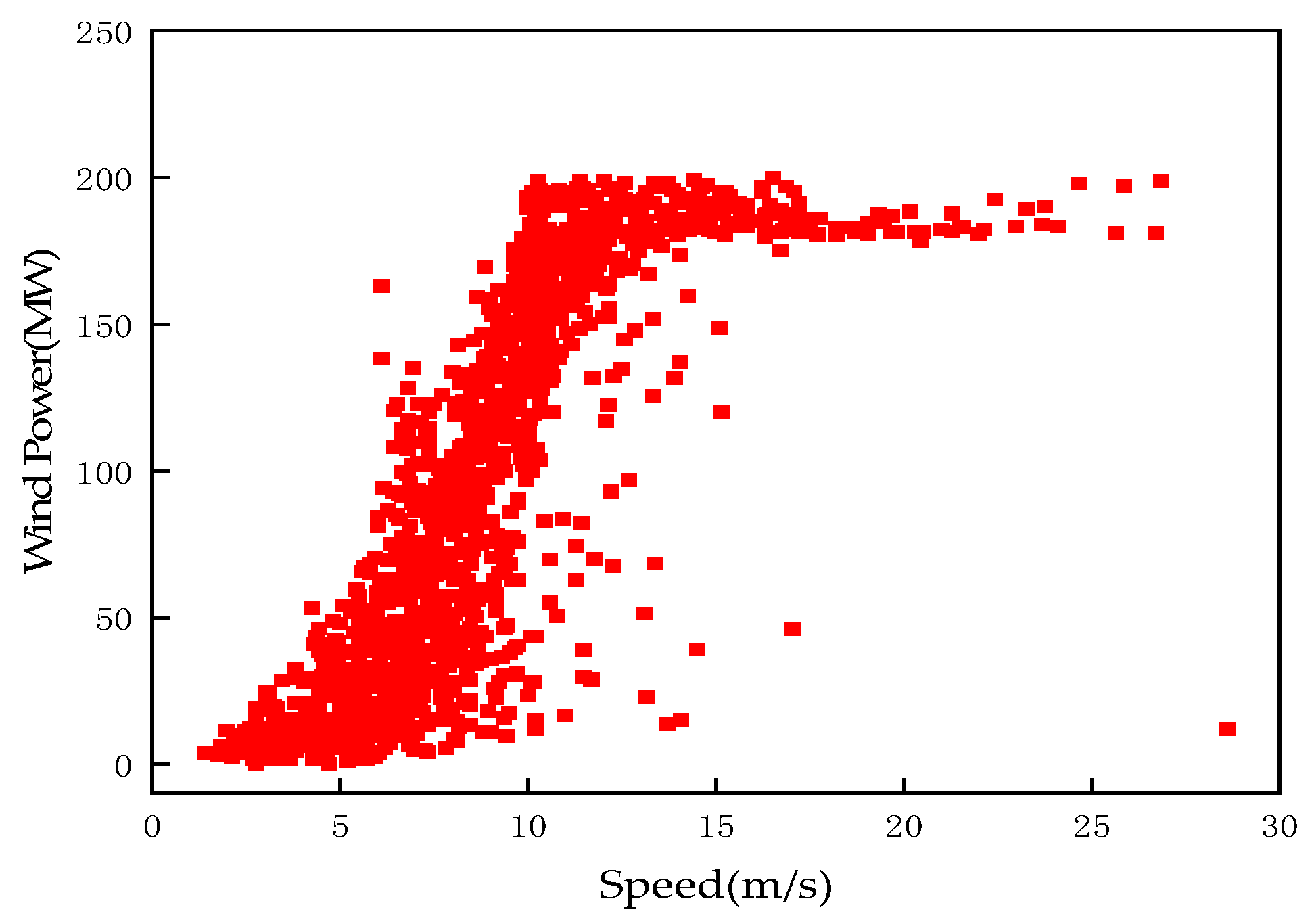
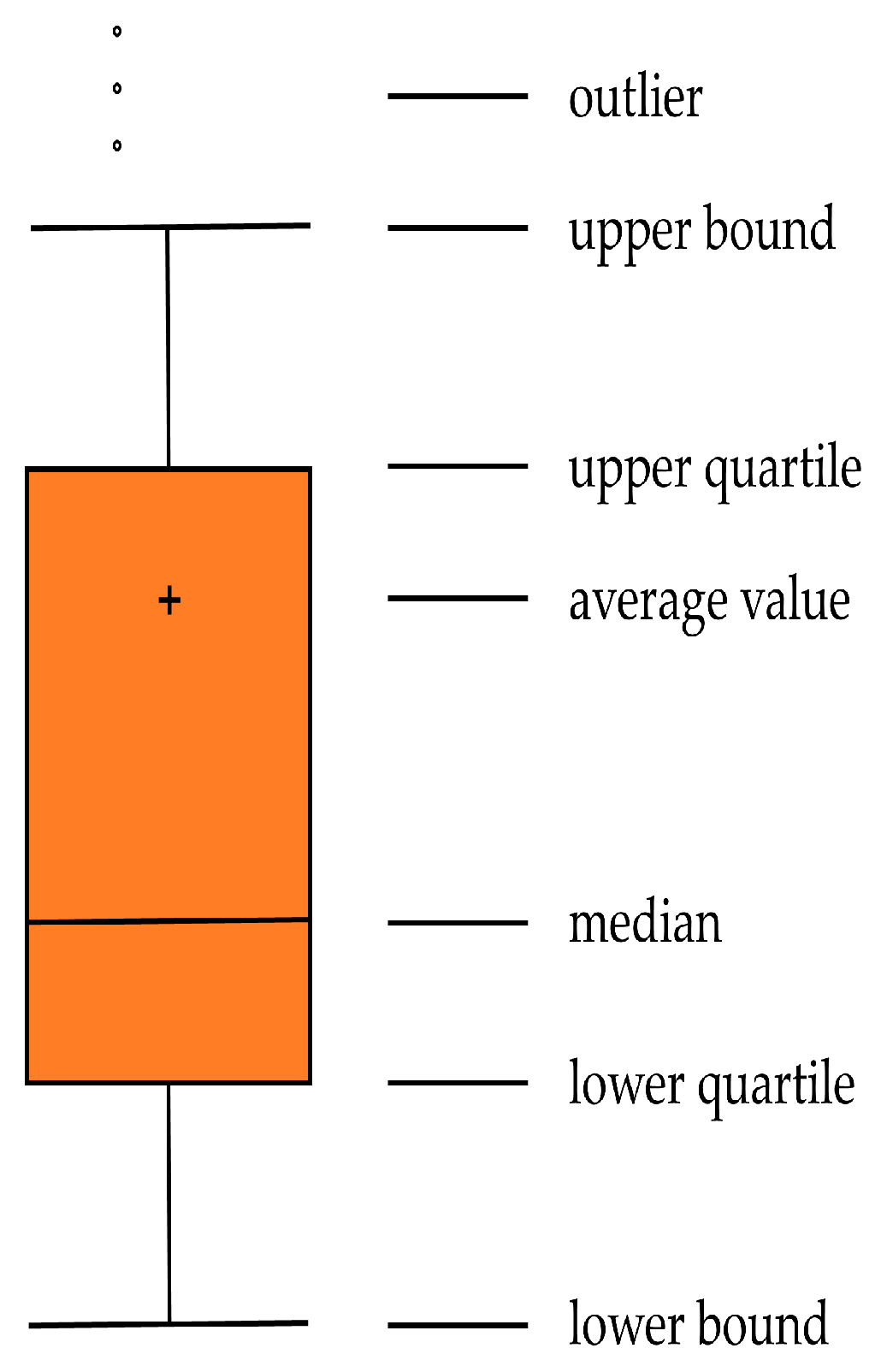
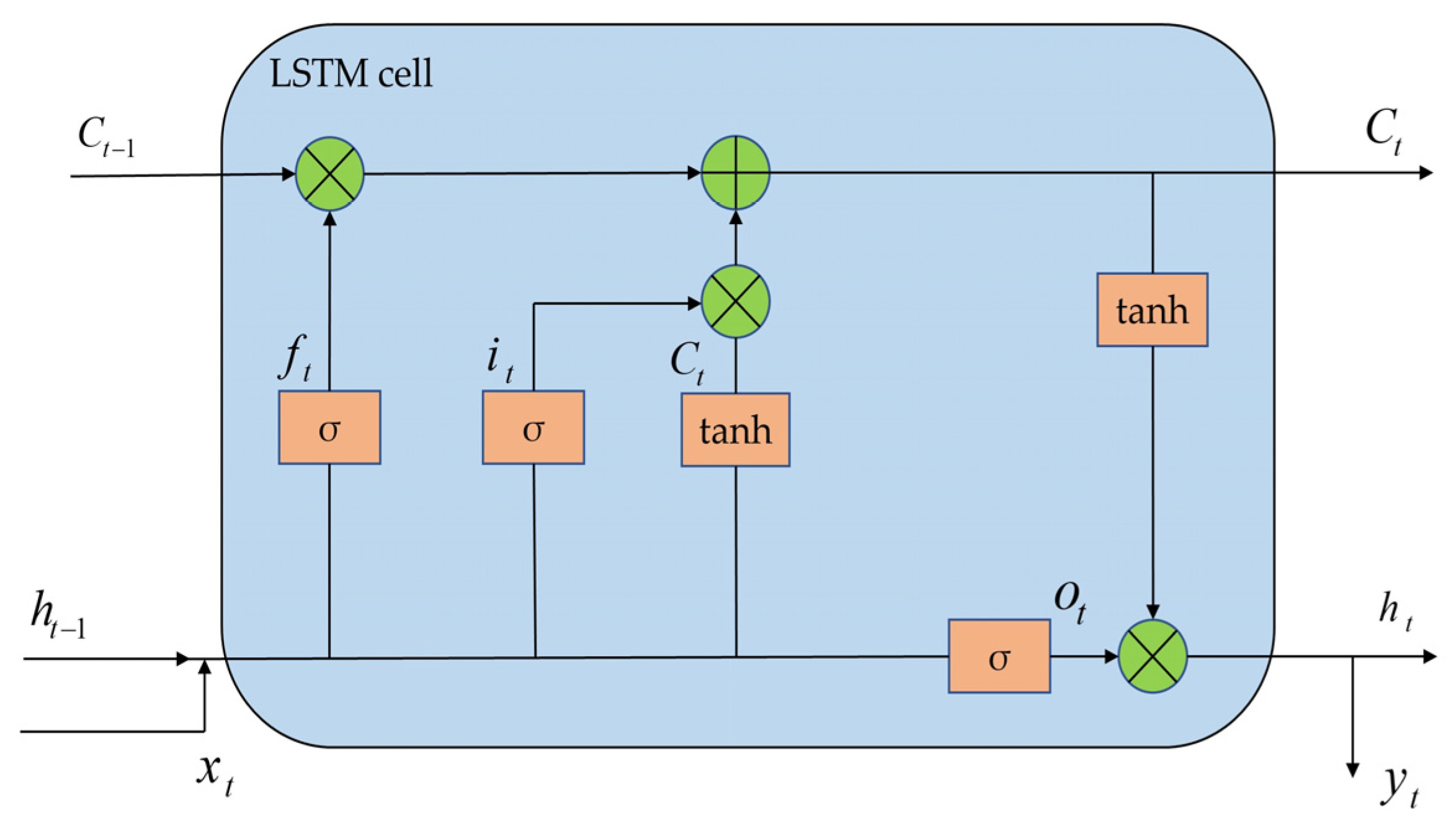
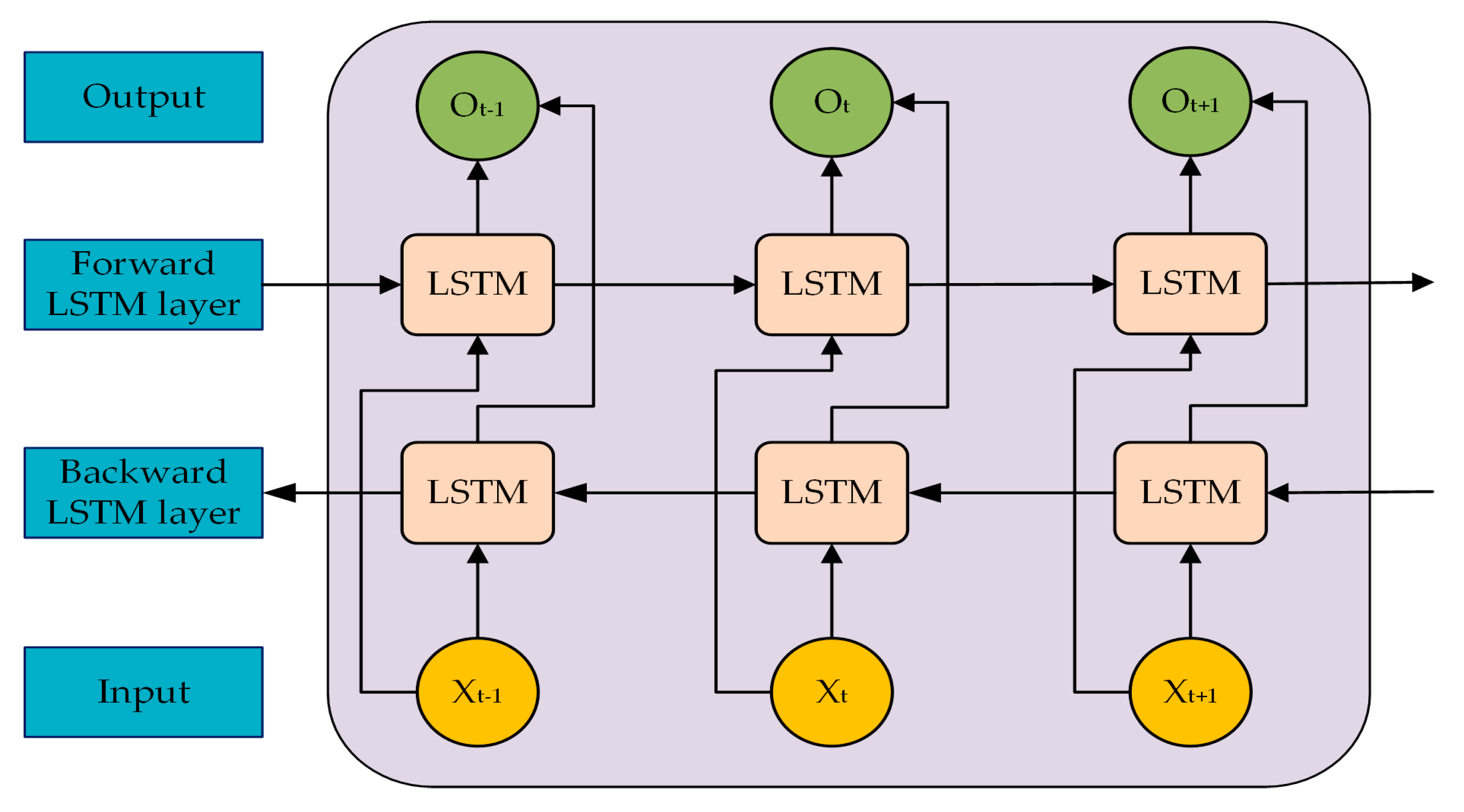
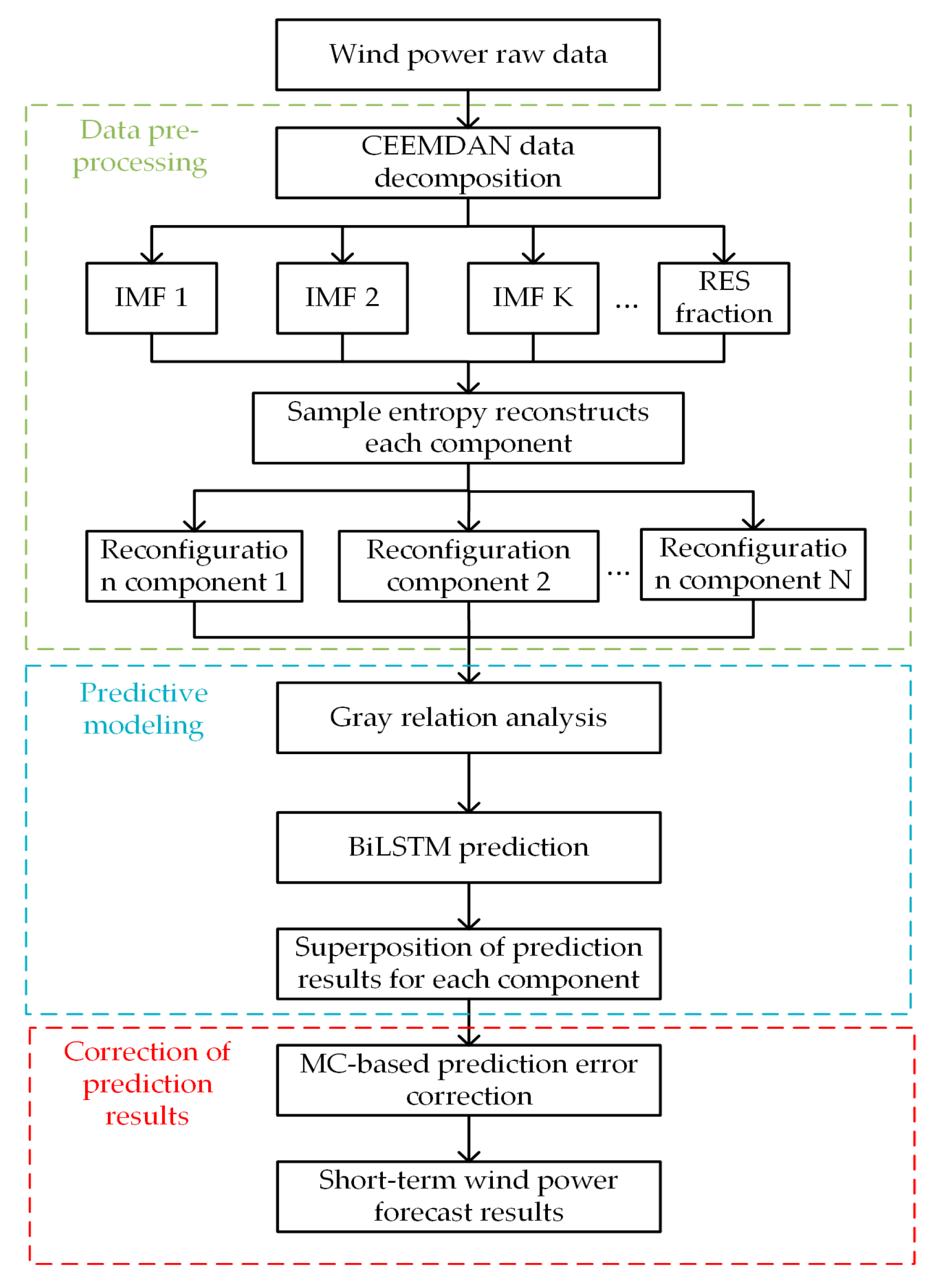
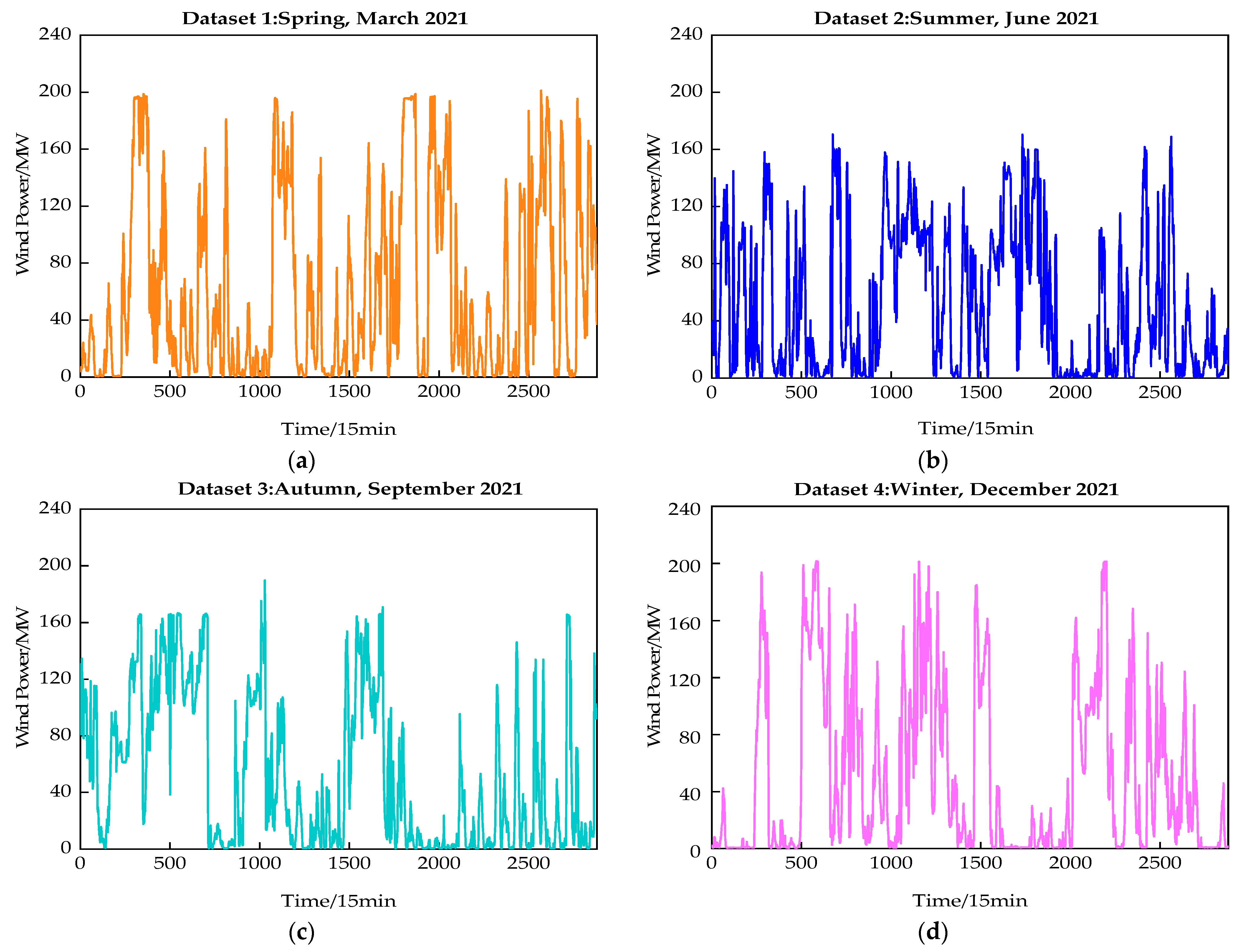
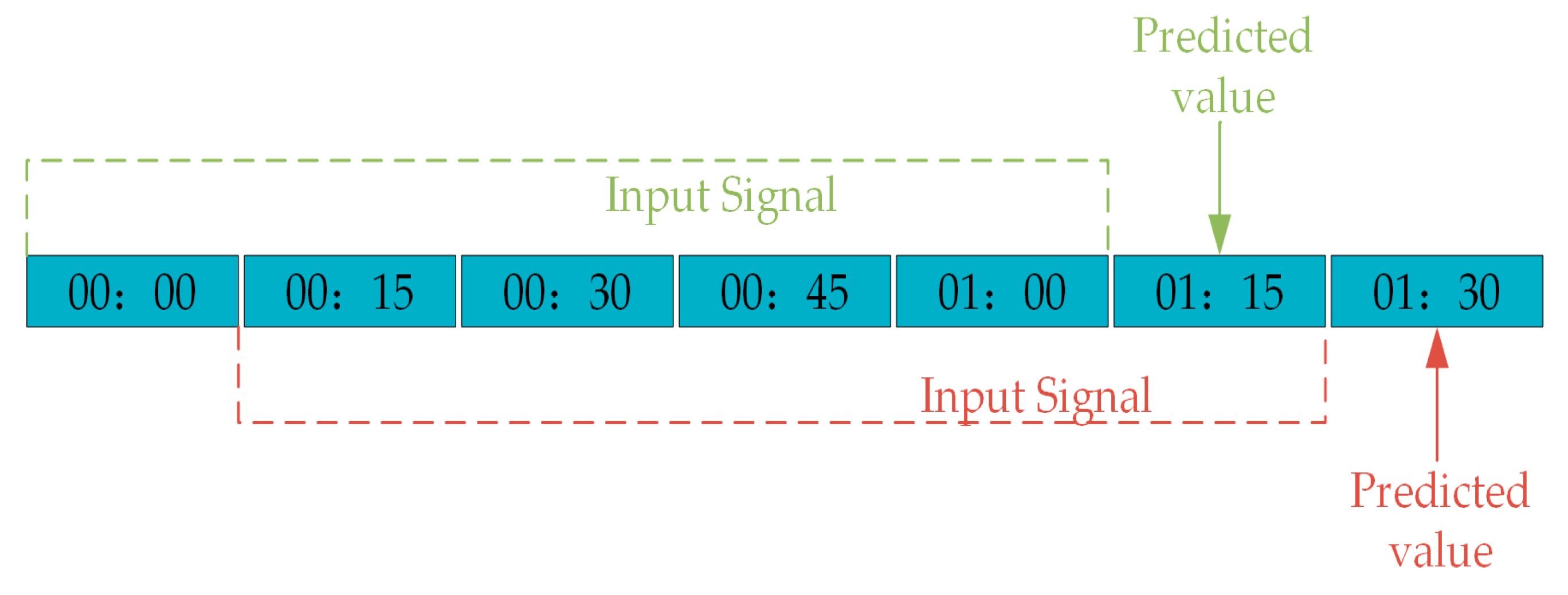
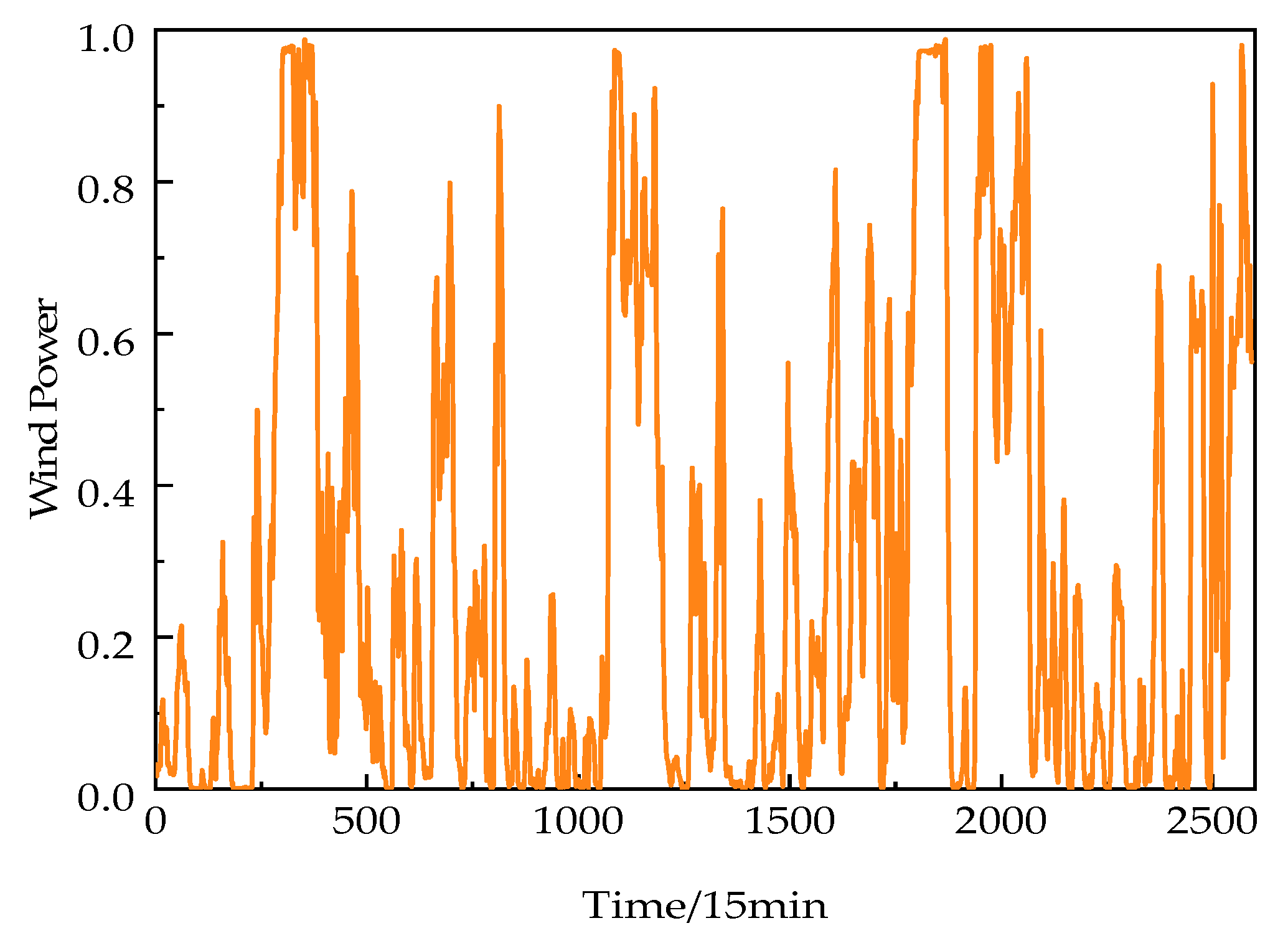

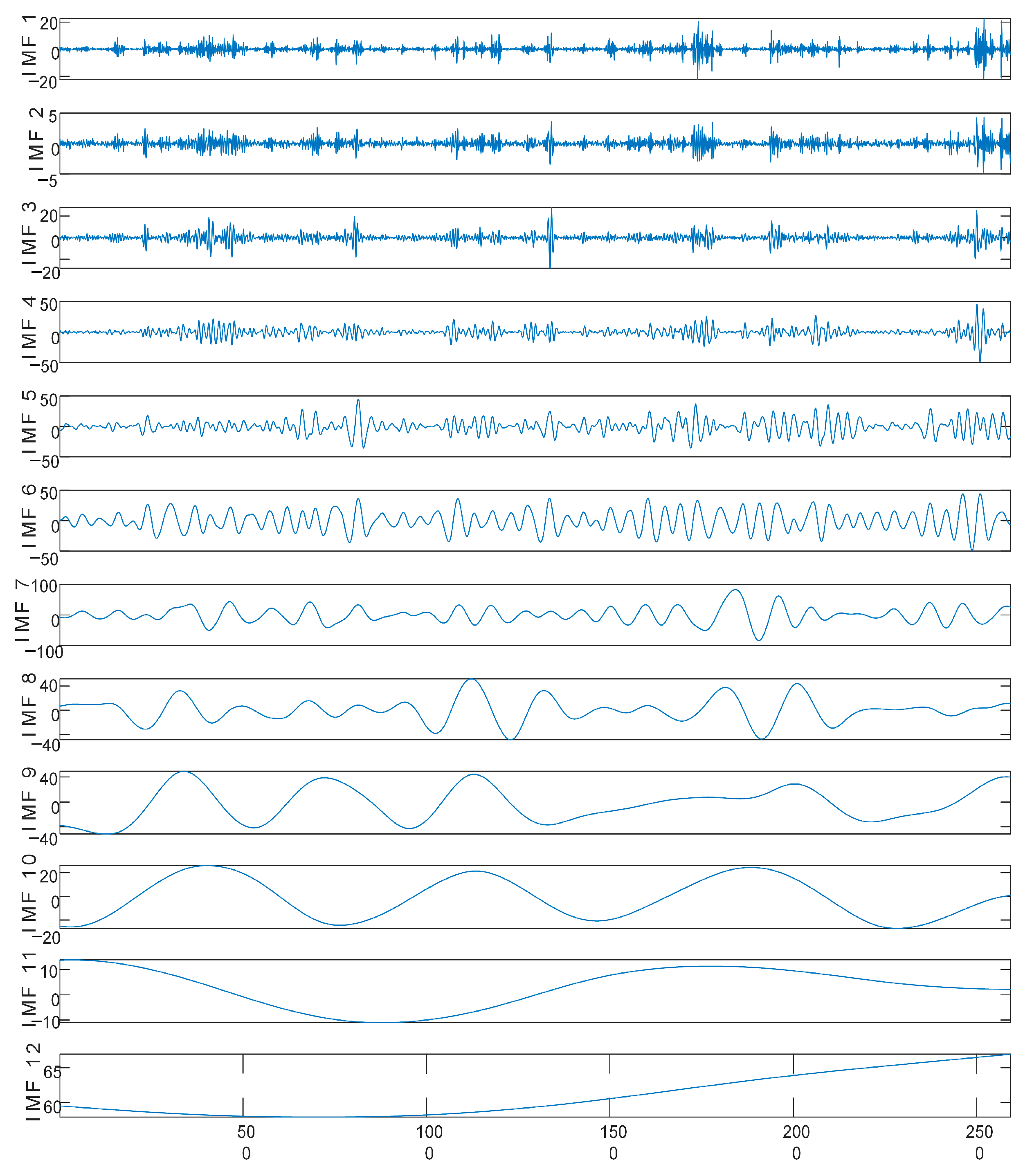
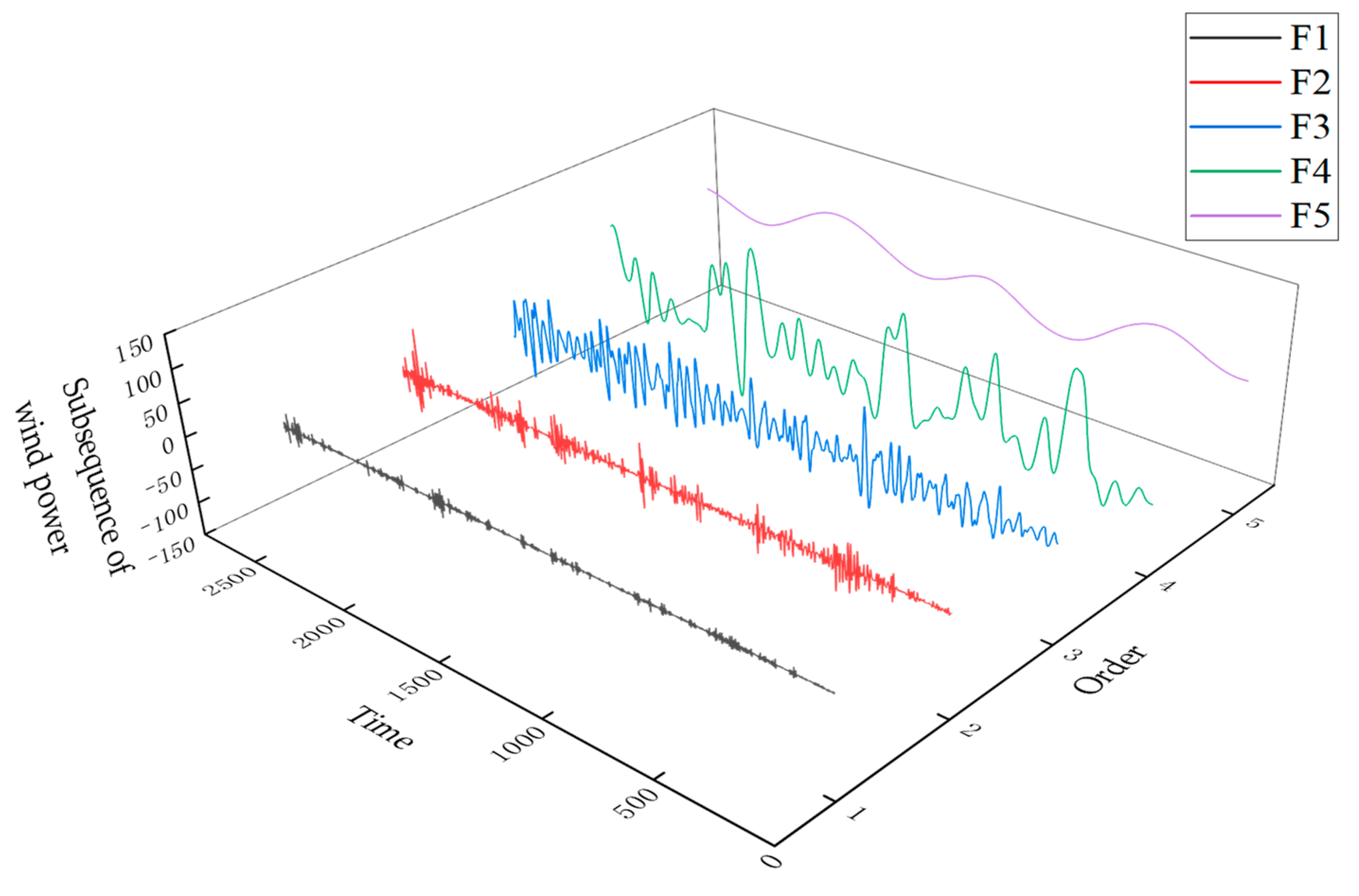
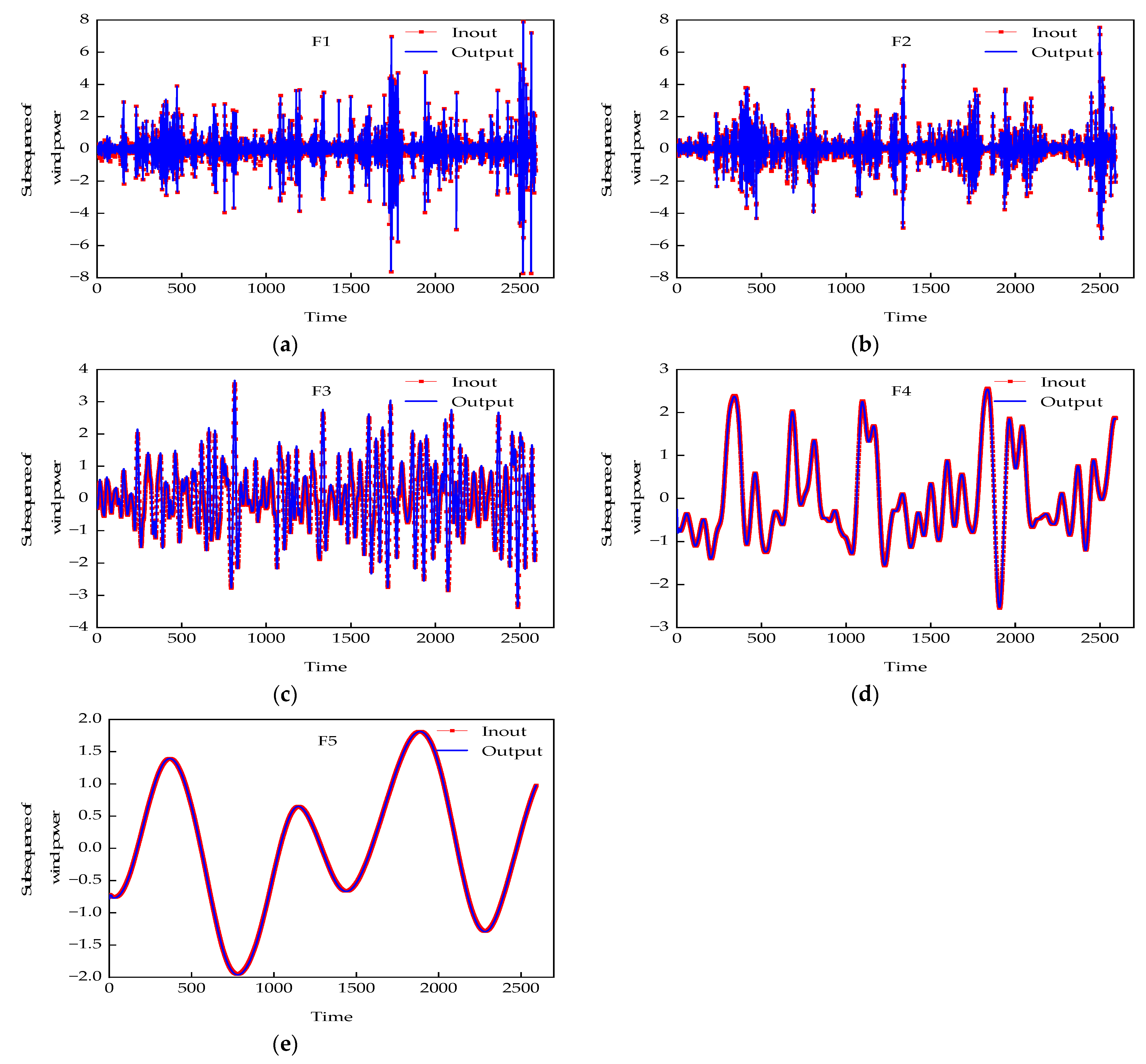
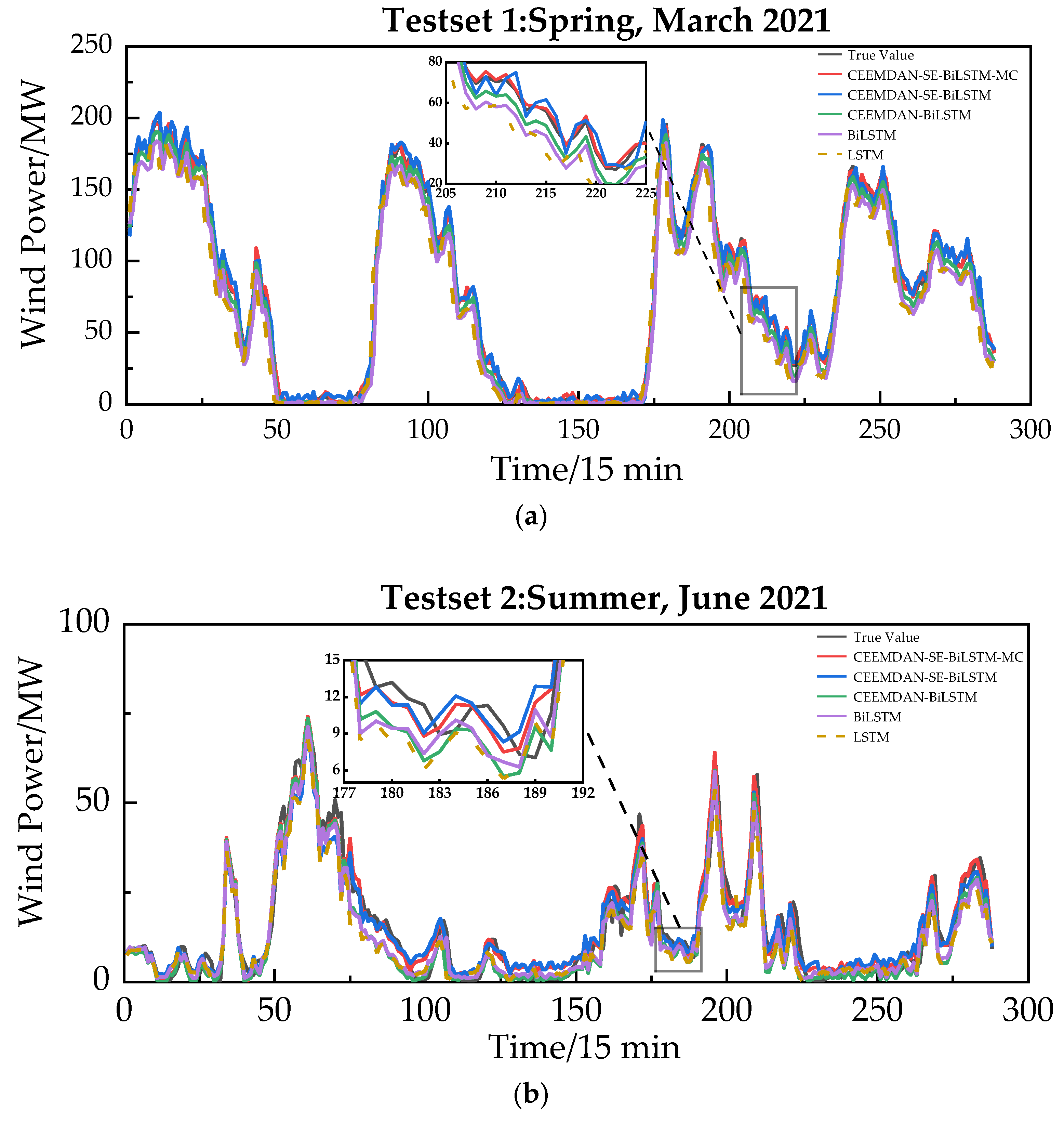

| Variables | Unit | Maximum | Minimum | Mean | Standard Deviation |
|---|---|---|---|---|---|
| Power | MW | 0.258 | 202.229 | 53.908 | 56.733 |
| Speed | m/s | 0 | 21.056 | 5.347 | 3.836 |
| Direction | ° | 0 | 360 | 158.639 | 89.834 |
| Temperature | °C | −18.662 | 40.131 | 11.325 | 14.027 |
| Pressure | hPa | 874.584 | 905.307 | 888.509 | 5.793 |
| Humidity | % | 2.506 | 94.921 | 33.593 | 20.761 |
| Months | Maximum | Minimum | MEAN | Kurtosis | Skewness |
|---|---|---|---|---|---|
| March | 201.253 | 0.434 | 60.005 | −0.612 | 0.855 |
| June | 170.578 | 0.402 | 51.105 | −0.944 | 0.619 |
| September | 189.838 | 0.322 | 52.589 | −0.960 | 0.676 |
| December | 201.630 | 0.368 | 50.678 | −0.398 | 0.935 |
| Component | SE Value |
|---|---|
| IMF1 | 1.286 |
| IMF2 | 0.986 |
| IMF3 | 0.864 |
| IMF4 | 0.786 |
| IMF5 | 0.507 |
| IMF6 | 0.464 |
| IMF7 | 0.257 |
| IMF8 | 0.243 |
| IMF9 | 0.229 |
| IMF10 | 0.136 |
| IMF11 | 0.114 |
| IMF12 | 0.107 |
| Reconstructing Component | Component |
|---|---|
| F1 | IMF1 |
| F2 | IMF2 + IMF3 + IMF4 |
| F3 | IMF5 + IMF6 |
| F4 | IMF7 + IMF8 + IMF9 |
| F5 | IMF10 + IMF11 + IMF12 |
| Data Set | Model | RMSE | MAE | MAPE | RAR |
|---|---|---|---|---|---|
| March | CEEMDAN-SE-BiLSTM-MC | 1.792 | 1.479 | 0.202 | 0.999 |
| CEEMDAN-SE-BiLSTM | 5.081 | 4.216 | 0.462 | 0.993 | |
| CEEMDAN-BiLSTM | 6.252 | 5.751 | 0.239 | 0.990 | |
| BiLSTM | 10.742 | 9.667 | 0.596 | 0.971 | |
| LSTM | 16.011 | 12.03 | 0.813 | 0.937 | |
| June | CEEMDAN-SE-BiLSTM-MC | 3.724 | 2.826 | 0.431 | 0.953 |
| CEEMDAN-SE-BiLSTM | 4.359 | 3.192 | 0.558 | 0.922 | |
| CEEMDAN-BiLSTM | 4.559 | 3.341 | 0.666 | 0.915 | |
| BiLSTM | 4.719 | 4.416 | 0.803 | 0.909 | |
| LSTM | 5.666 | 5.107 | 0.953 | 0.868 | |
| September | CEEMDAN-SE-BiLSTM-MC | 1.476 | 1.275 | 0.419 | 0.999 |
| CEEMDAN-SE-BiLSTM | 5.596 | 3.467 | 0.520 | 0.985 | |
| CEEMDAN-BiLSTM | 6.374 | 4.456 | 0.542 | 0.980 | |
| BiLSTM | 6.778 | 4.841 | 0.575 | 0.978 | |
| LSTM | 7.074 | 5.165 | 0.860 | 0.976 | |
| December | CEEMDAN-SE-BiLSTM-MC | 1.429 | 1.015 | 0.113 | 0.997 |
| CEEMDAN-SE-BiLSTM | 2.151 | 1.215 | 0.233 | 0.993 | |
| CEEMDAN-BiLSTM | 4.855 | 3.746 | 0.423 | 0.969 | |
| BiLSTM | 5.516 | 4.189 | 0.454 | 0.960 | |
| LSTM | 8.503 | 6.165 | 0.456 | 0.905 |
Disclaimer/Publisher’s Note: The statements, opinions and data contained in all publications are solely those of the individual author(s) and contributor(s) and not of MDPI and/or the editor(s). MDPI and/or the editor(s) disclaim responsibility for any injury to people or property resulting from any ideas, methods, instructions or products referred to in the content. |
© 2023 by the authors. Licensee MDPI, Basel, Switzerland. This article is an open access article distributed under the terms and conditions of the Creative Commons Attribution (CC BY) license (https://creativecommons.org/licenses/by/4.0/).
Share and Cite
Liu, Y.; He, J.; Wang, Y.; Liu, Z.; He, L.; Wang, Y. Short-Term Wind Power Prediction Based on CEEMDAN-SE and Bidirectional LSTM Neural Network with Markov Chain. Energies 2023, 16, 5476. https://doi.org/10.3390/en16145476
Liu Y, He J, Wang Y, Liu Z, He L, Wang Y. Short-Term Wind Power Prediction Based on CEEMDAN-SE and Bidirectional LSTM Neural Network with Markov Chain. Energies. 2023; 16(14):5476. https://doi.org/10.3390/en16145476
Chicago/Turabian StyleLiu, Yi, Jun He, Yu Wang, Zong Liu, Lixun He, and Yanyang Wang. 2023. "Short-Term Wind Power Prediction Based on CEEMDAN-SE and Bidirectional LSTM Neural Network with Markov Chain" Energies 16, no. 14: 5476. https://doi.org/10.3390/en16145476
APA StyleLiu, Y., He, J., Wang, Y., Liu, Z., He, L., & Wang, Y. (2023). Short-Term Wind Power Prediction Based on CEEMDAN-SE and Bidirectional LSTM Neural Network with Markov Chain. Energies, 16(14), 5476. https://doi.org/10.3390/en16145476






